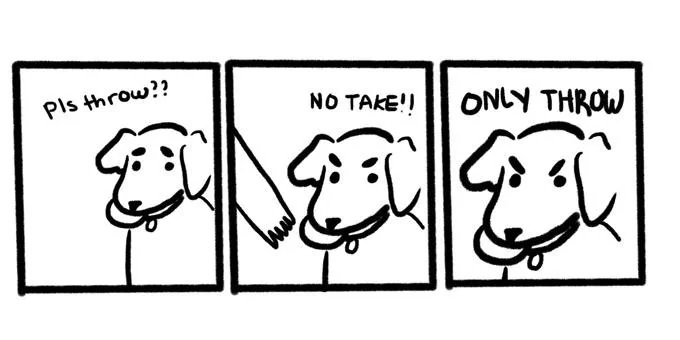Management styles have diversified over the past decade, with more “traditional” command-and-control approaches falling out of fashion. Individual contributor (IC) and management paths are no longer binary and self-management models (such as this description from scrum.org) are increasing in popularity. The player-coach posits itself as an idealistic middle ground between the old-school manager and workplace anarchy: a skilled expert or IC who also manages a team. However, the risks of combining two discrete roles become apparent when player-coaches have no coach of their own and can be a quick path to burnout.

As a player-coach who has seen (and experienced) many of these hazards, I urge colleagues of player-coach managers (both direct reports and supervisors) to be mindful of the following suboptimal scenarios.
The Player-Coach is Trying to be Two People at Once
Why this is suboptimal: A player-coach is supposed to split their time between managerial tasks and rolling their sleeves up to do work with their team. If a player-coach is filling in for a full-time manager (or a manager is taking on IC tasks due to understaffing) and expectations haven’t changed for their output, this creates an unsustainable workload for the player-coach.
How to improve this scenario: Audit the expected output of the player coach to ensure that they are not expected to complete the work of two full-time employees. This might look like automating (or eliminating, if unnecessary) some administrative tasks to take them off the player-coach’s plate, structuring blocks of managerial and IC work to lessen the cognitive fatigue of context-switching, or ensuring that they are not allocated at 100% for IC output to their team/division/client.
Only Player or Coach
Why this is suboptimal: In the absence of coverage or guidance, an overextended player-coach may resort to being either player or coach, but not both. If managerial tasks are neglected, team morale and administrative compliance may suffer; if IC tasks are neglected, deadlines can be missed or subpar work can be delivered.

I have been the dog in this cartoon earlier in my career when it was difficult to balance
being both player and coach
How to improve this scenario: If you have a player-coach who tends to default to coach, create processes that make capacity estimating and delivery standards clear. This will provide explicit measures of how much work is possible for any given increment of time (for example, if only three of five team members are working this week, it will be evident that committing to five people’s worth of work is not feasible) and when work is ready for review or delivery (and minimize the possibility of subpar work sneaking through the cracks). If your player-coach tends to default to player, determine what types of support may help them keep up with their managerial tasks: This might look like quick check-ins, calendar reminders, or easy-to-complete templates.
The Team is too Large
Why this is suboptimal: Ensuring that teams are running smoothly and producing quality work simply requires more time when there are more people. A (now redacted) study from Boston Consulting Group cited eight direct reports as the tipping point for effective player-coach leadership, although other practitioners claim it’s fewer than that. (For example, this author’s experience limits it to four.) If player-coaches are unable to maintain good working dynamics and support the growth of their direct reports, this can result in team attrition, conflict and decreased team performance.
How to improve this scenario: Realistically assess what the player-coach can handle. There is likely no magic number of direct reports that creates an ideal balance, so there are other factors to consider such as team maturity, work scope, new versus established work, and the level of experience the player-coach has in this dual role. Additionally, be open to iterating on this model if the player-coach raises a red flag or team members are not thriving.
The Player-Coach Never Learned to Manage
Why this is suboptimal: Managing is a skill distinct from subject matter expertise. If a player-coach has not had training or experience managing others, they will not be set up to thrive when overseeing a team of complex, diverse people. Although many skilled ICs will acquire leadership skills as they mature in their career, this is often not sufficient for successful leadership. In worst case scenarios, player-coaches can unintentionally recreate toxic work environments based on previous bad management styles they have experienced.
How to improve this scenario: Assess and support your player-coach’s management skills instead of assuming that years of experience as an IC are sufficient. Identify areas for growth for the player-coach and develop a support plan for them to improve their skills. Depending on the resources available at your organization, this can include peer mentorship, a formal management training program, a self-paced course, or an apprenticeship program.
I don’t think player-coach management is a lost cause, but there are definitely ways we can better support our colleagues so they can thrive without having to limit themselves to the management/IC binary path.
Ann Aly (pronounced like Ali) is a UX and civic tech practice leader with a background in academic research, music, and education. She combines these experiences to lead teams improving federal government services, emphasizing communal leadership and transparency. Ann holds a PhD and MA (both in Linguistics) from UCLA, and an MA (Spanish and Portuguese) and BA (Music) from Florida State University. When she’s not asking too many questions, Ann enjoys woodworking, gardening, and exploring the Shenandoah Valley woodlands near her home.





Leave a Reply
You must be logged in to post a comment.